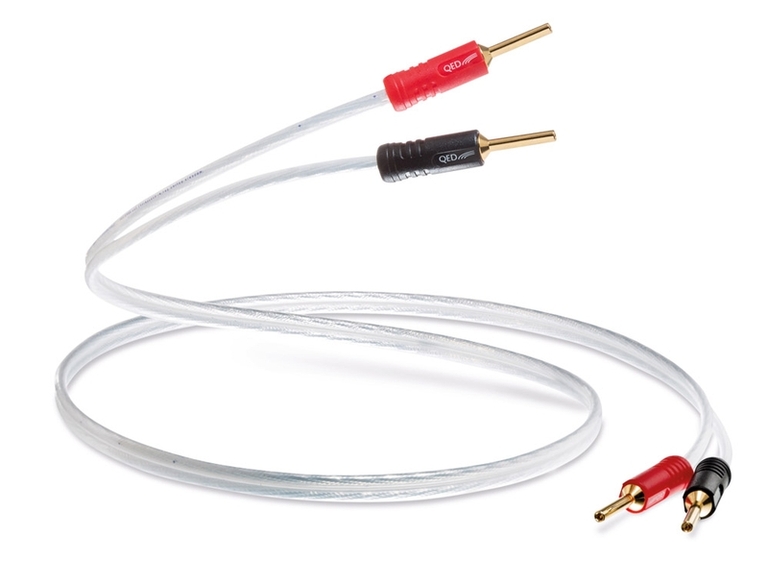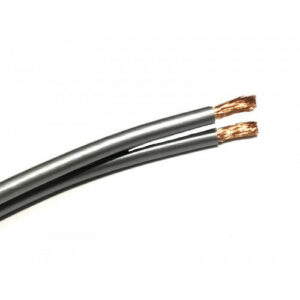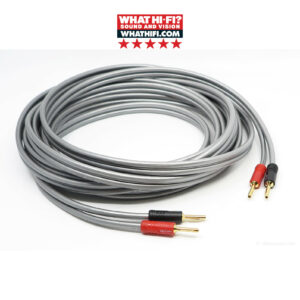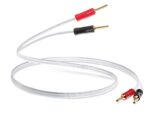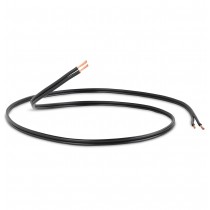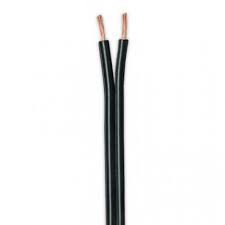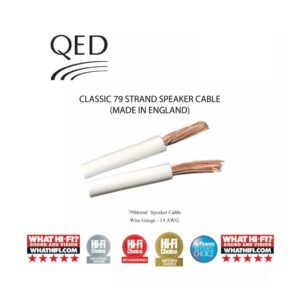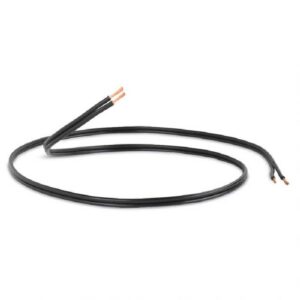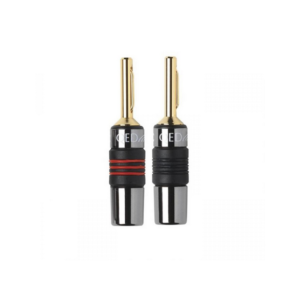These reports set out the “top down” design-principles that have resulted most recently in the development of QED XT25 loudspeaker cable – the new class leading standard in budget to mid-range speaker cables.
QED XT25 with QED Airloc™ Forte banana plugs
$325.00 – $625.00
The journey to XT25…..
The QED speaker cable story began in 1973, with the launch of the world’s first specialist speaker cables, QED 42 and 79 strand, now household names in the audio industry. Building on this longstanding British speaker cable heritage, QED embarked on an exhaustive research program into cable parameters which began in 1995 and continues into 2017 with the release of “The Sound of Science”, a 40 page White Paper distilling the research published since 1973 by QED.
What are the features which make this cable so special?
X-Tube™ technology first came to prominence in 2005 with the launch of the world renowned Silver Anniversary XT, the most highly regarded mid-range cable in the world, winning the What Hi-Fi Product of the Year three years in a row. These design principles also grace the multiple award winning XT40 speaker cable and XT25.
As frequency increases, electrons flow more and more towards the periphery of a conductor so that if the frequency is high enough only a very thin layer (or skin) on the outside of the conductor is used. This “skin depth” varies for different materials at a fixed frequency and in copper it means that if a conductor has larger than 0.66 mm² cross-sectional area not all of that area is available for an analogue music signal to use. In SAXT the “skin effect” problem was effectively eliminated by the use of X-Tube™ Technology which works by placing all of the conducting material around a central hollow insulating rod. However, for a.c. signals, changing magnetic fields generated by the flow of current set up eddy currents in nearby conductors which force current to flow only in areas furthest away from conductors carrying current in the same direction and vice versa.
This “proximity effect” has a detrimental influence on current distribution in a speaker cable even if it utilises X-Tube™ Technology. With XT25 we tackle the proximity effect and the skin effect by combining our existing Aircore™ and X-Tube™ Technologies into a new X-Tube™ variation. By forming the conductors into a tube-like shape with a hollow centre, current densities at higher frequencies are maintained because the electric field which contributes towards the skin effect acts towards the centre of the conductor from where the conductive material has been removed. At the same time instead of using a braided structure a ring of conductors is formed into separate bundles with only a loose electrical association which are then twisted into a 90 mm lay so that no single conductor bundle remains on the inside or outside of the cable (and therefore prey to the proximity effect) for long enough for it to become an audible problem. This geometry promotes a more consistent signal distribution making for a more accurate musical reproduction.
Low DC Resistance
At QED we recognise that low d.c. resistance of the loudspeaker cable is of paramount importance for high-fidelity signal transfer. This is because the speaker presents a frequency dependent load to the amplifier of which the cable forms a variable proportion. If resistance is allowed to be too large then audible changes to the frequency response characteristics of the loudspeaker will be introduced which cannot be corrected for by the amplifier’s negative feedback loop. In order to provide a marked improvement over similarly priced cables in both our own and our competitors’ ranges without increasing the overall size and flexibility of the cable substantially, the cross-sectional area (CSA) of XT25 has been enlarged to 2.5mm2 of 99.999% oxygen-free copper. This instantly gives the new cable a low d.c. resistance and therefore a more accurate musical delivery.
Low-Loss Dielectric
It is not generally appreciated that the electrical signals moving at or near the speed of light in a wire do so via the medium of electromagnetic (EM) waveforms which exist within the dielectric which surrounds the conductors as well as within the conductors themselves. The movement of electrons along the conductor merely facilitates generation of the EM waveform as their “drift velocity” is only a few centimetres per second. It is therefore important to ensure that the dielectric material used to insulate and protect the central conductors of the speaker cable is of a type which “permits” the establishment of EM waveforms without appreciable loss. Dielectric losses are directly proportional to the “permittivity” of the material used and as this a measure of each material relative to that in a vacuum it should be as close to unity as possible. Like its predecessors, XT25 uses a specially formulated low-density polyethylene (LDPE) dielectric which at 1.69 has the lowest relative permittivity practically available.
QED research has shown that low capacitance cables are generally preferred in listening tests over high capacitance counterparts and this is usually because low-loss dielectrics have been utilised. The use of LDPE and careful control of conductor spacing results in a cable with a very low capacitance per meter and a dissipation factor (loss tangent) of 0.0001 at 10 kHz.
What is the result of all these techniques?
The graph below shows how the dc resistance of XT25 remains effectively unchanged across the entire audible frequency band when compared to a conventional cable of the same cross-sectional area. Combined with the sonic advantages of a low loss dielectric the improvements in current distribution place the new cable in a class well above cables with a less sophisticated geometry.
| Jacket OD | 3.96 mm |
| Wire gauge | 14 AWG |
| Cross-sectional area | 2.50mm² |
| Loop resistance | 13.4 mΩ/m |
| Capacitance | 35pF/m |
| Inductance | 0.52 µH/m |
| Dissipation factor | 0.0004 |
| Ideal for use in all installations |



